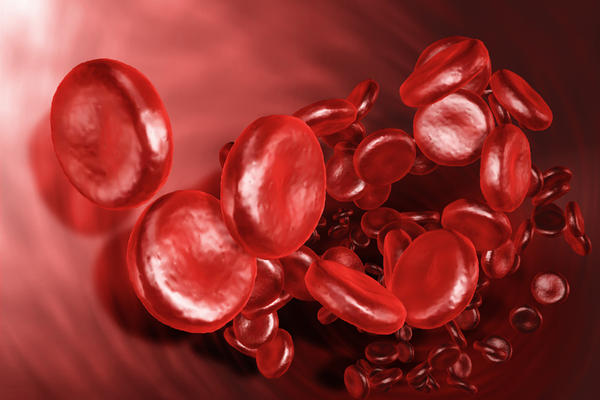Every woman anticipates and knows if something goes wrong during her periods. One of the most common events during menstruation is blood clots. What are the reasons for this? Is this phenomenon considered normal or pathological? Which diseases can be classified as harmless, and which can lead to a serious consequence? You can learn about all this by reading the article.
Menstruation and cycle time
What is the menstrual cycle? So it is customary to call the period of time, which takes count from the beginning of some menstruation days to the start of others. It averages 28 days, and this is the absolute norm for women. However, one should pay attention to the fact that it can vary significantly among different women, vary, most often at a young age, when the cycle is poorly controlled by sex hormones. Also, some women have strong menstruation and pain, while others have the opposite.

The menstrual cycle starts from the first day of menstruation, and lasts up to one week, while the internal mucous membranes of the uterus are updated - the decidual layer, and then the woman’s body begins to produce specific hormones that are a signal for the formation of a new mucous membrane on the uterus.
After this, the endometrium begins to condense to take an egg - this happens from about the 14th day of menstruation. When one of the ovaries prepares an already matured egg for exit into the fallopian tube, the ovulation phase begins (it occurs around the middle of the cycle). Then for several days the egg moves through the fallopian tube, ready for fertilization, however, if the sperm cell does not fertilize it, then the egg will simply dissolve.
If the entire female body is ready for pregnancy, but it has not yet occurred, then hormone production decreases, the uterus rejects the endometrium, the inner shell exfoliates - this process is observed in the form of menstruation.
This all means that the discharge during menstruation is a mixture of a small amount of blood, endometrium and particles of mucous tissues. Normally, menstrual flow is up to about 200 ml.
More about the problem
The presence of blood clots in the discharge will not always talk about the development of any pathology. There can be many reasons. Normal discharge in any woman has its own color and density.
The woman’s body is so arranged that during menstruation it produces special enzymes that can act as anticoagulants and slow down the blood coagulation process. If they are not able to cope effectively with the task, then with abundant, strong menstruation, clots form. This coagulated blood has a maroon color, a jelly-like consistency and a length of up to 10 cm. Clots in this case are absolutely safe.

Also, one does not have to worry much when they are not accompanied by fever, severe pain.
This problem should not bother you (for no additional reason) if:
- You have not reached the age of 18.
- If blood clots after childbirth appeared during the first month.
- If you have recently had an abortion, surgery, miscarriage, curettage.
- You use intrauterine contraceptives that cause heavy discharge during menstruation.
- You know that your uterus is abnormally located, and this makes normal blood flow difficult.
In addition, it is important to remember certain details. Blood clots (at menstruation), similar to the liver, are formed when a woman has been in the same position for a long time, and then abruptly changed it. For example, from a horizontal position (while resting or sleeping) or sitting (while on a bus, office, car) - in a vertical position (when walking). Due to this, the woman passes from a stationary state to a mobile one, and stagnant blood in the uterus coagulates during calm, forming such clots that go out. They come out more abundantly when the movement of the body begins. Thus, blood clots (for menstruation), similar to the liver, are the absolute norm.
Causes of the phenomenon
Despite the fact that in most cases clots are not a sign of any disease, they can still be triggered by some malfunctions in the body. Therefore, with any suspicion, it is important to consult a doctor.
But we also offer to consider them in detail.
Hormonal disbalance
In adolescence, in the body of girls, hormonal failure is very often observed. When the body only forms menstrual activity, rhythmic ovulation is not yet established. This is a period of establishing the process, as a rule, it lasts about 2 years.

At this time, failures in the relative duration of the cycle, a strong sensitivity of the female body to various stressful situations, as well as to any of the most minor negative factors, are possible. Thus, the girls' reproductive system can react with extended periods of menstruation (up to 2 weeks) and the release of blood in the form of clots that look like a liver. This is called juvenile bleeding.
Blood clots after childbirth also have a place to be. The fact is that hormonal disorders occur after the birth of a child or curettage. For a whole month after childbirth or in the case of surgical intervention, large bloody lumps are able to stand out in the woman in labor. A common phenomenon, if, together with the discharge, there is no increase in temperature, in another case it is necessary to check whether there are any fragments of the placenta in the uterus.
A hormonal imbalance is visible if there is a disruption in the functioning of the glands in internal secretion, as well as a cycle failure. It is then that the output of blood clots in women is observed.
Menopause
Very often, disorders occur in women over the age of 45, during perimenopause. During this period, the frequency of ovulation decreases, the number of rejected blood secretions, as well as the endometrium changes, menstruation comes with a huge amount of blood clots from the vagina.
Endometriosis and adenomyosis
A disease such as endometriosis is characterized by the spread of the mucous membranes of the uterus beyond, which is accompanied by prolonged and painful periods, cycle failures, and an increased amount of blood that has come out.

The abnormal development of the mucous membranes of the uterus (adenomyosis disease) through damage to the walls is accompanied by severe constant pain and large amounts of secretions with blood clots during menstruation.
Adenomyosis affects not only one space of the female organ, but also has a chance to spread to the intestines, ovaries, and other organs.
The development of endometriosis, in which large blood clots are observed during menstruation, has not yet been studied, although it is generally believed that endometrial screenings are formed on the inflamed tissue.
Polyposis - endometrial disorder
For women after 30 years and those who are in premenopausal age (50 years), clot discharge is a fairly common occurrence. Polyps, or endometrial polyposis, is a violation of the internal tissue of the uterine cavity. These tissues grow, while covering the entire uterine cavity with polyps, this can cause blood clots during menstruation, as well as pain in the lower abdomen, disturbance of the monthly cycle due to the abnormal "growth" of the uterine mucous membranes on the walls and their unsystematic "removal" .
Other diseases
If a blood clot has come out before or during menstruation, then this can be caused by other diseases or pathologies, for example:
- Obesity. The fact is that an excess of fatty tissue leads to a violation of the amount of estrogen in the blood, affecting the rate of formation of the endometrium.
- Diabetes mellitus, hypertension or a sick thyroid - all this is accompanied by a large number of secretions due to metabolic disorders in the body.
- Inflammatory diseases of the genital organs, both external and internal. They have an infectious nature, cause an inflammatory reaction, the main role in this process is played by blood vessels.

Pathology of pregnancy and ectopic pregnancy
Pregnancy pathology is observed when discharge from a pregnant lady comes out in large lumps, this may be a warning of a miscarriage. There is bloody copious discharge, and menstruation is painful, with discomfort in the lower abdomen in the form of contractions.
Female genital anomaly
Violation at an early stage of fetal development, during pregnancy, can manifest itself as sexual abnormal development, and the uterus can have any pathological form. Thus, when discharge is observed, the woman’s uterus functions with abnormalities, and this leads to severe bleeding, lumps form.
Pathology of the cavity and cervix:
- Myoma. A benign neoplasm or nodes violate the entire process of natural "removal" of the endometrium from the first day of the cycle. In this case, there are plentiful periods, in which clots are contained. This bleeding occurs as a result of menstrual irregularities, and can occur both in the daytime and during sleep.
- Endometrial hyperplasia is the most common disorder, during which blood clots, including dark ones, go beyond the menstrual period. Pathology may accompany some diseases: hypertension, diabetes mellitus, increased body weight.
- Oncological pathologies of the cervix and uterine cavity. Due to the obstructed movement of blood from the uterus and blood coagulation in the uterine cavity, a large number of clots form, and menstruation itself is very painful.
- Cystic change in the ovary. Gynecological diseases of the ovary, which are associated with hormonal disorders, are a very painful process, in particular, in the middle of the menstrual cycle, which is manifested by sharp pains in the lower abdomen, cycle failure and bleeding between menstruation.

Treatment methods
If menstruation with clots, what should I do? If monthly blood loss is observed, during which the formation of blood clots is observed, then it is necessary to undergo a course of therapy:
- Conservative therapy. Her goal is to replenish the woman's body with iron. This should include the use of iron vitamins, both due to the use of products and the drug method, through bed rest, in particular, with juvenile uterine bleeding and hormonal treatment.
- Surgical treatment. It is prescribed for the most difficult cases, for example, uterine fibroids, pathological endometrium, internal septum. Occurs by the method of curettage, hysteroresectoscopy. In the most dangerous situations or in the case of malignant pathologies, the uterus must be removed.
When to see a doctor?
Any clot should alert a woman. Do not ignore them. It is necessary to contact a doctor for an examination in the following cases:
- Allocations do not pass within a week.
- Bleeding does not decrease, and also reached an amount of more than 200 ml.
- Bleeding is manifested "not in due time."
- You are planning a conception. Here, blood clots may indicate egg rejection, as well as a possible miscarriage.
- Bloody discharge has an unusual pungent odor.
- Allocations are accompanied by severe pain, this can be a sign of infectious (inflammatory) processes or hormonal failure.
- There was weakness, shortness of breath, lethargy, blanching of the skin, tachycardia, which indicates blood loss.

Summary
The main thing to remember - clots can in most cases be normal, when menstruation is almost painless, without creating additional discomfort. But if there is concern, doubt, then the phenomenon under study in a painful condition is a signal to sign up to the doctor, undergo examination to avoid dangerous diseases.